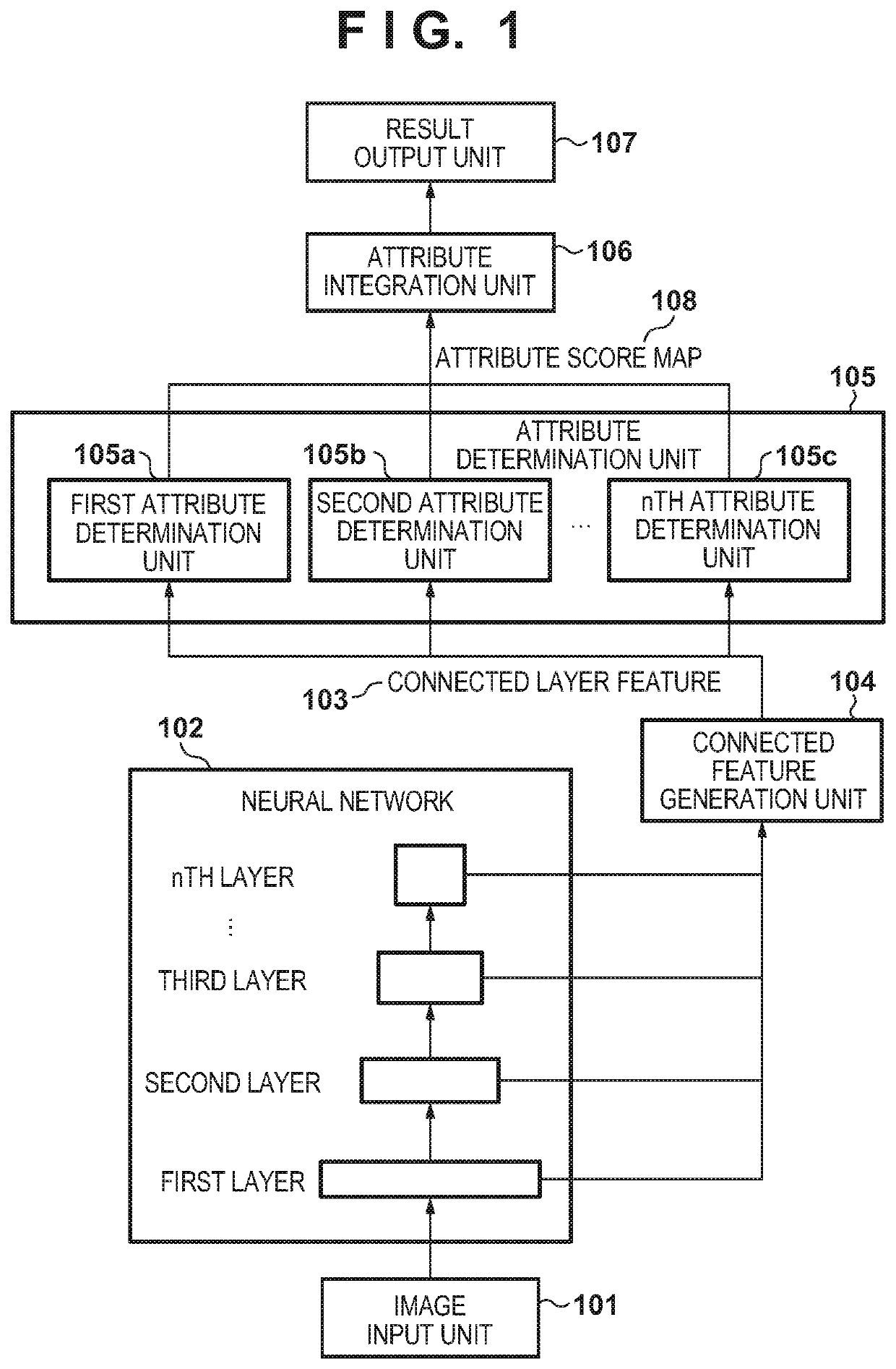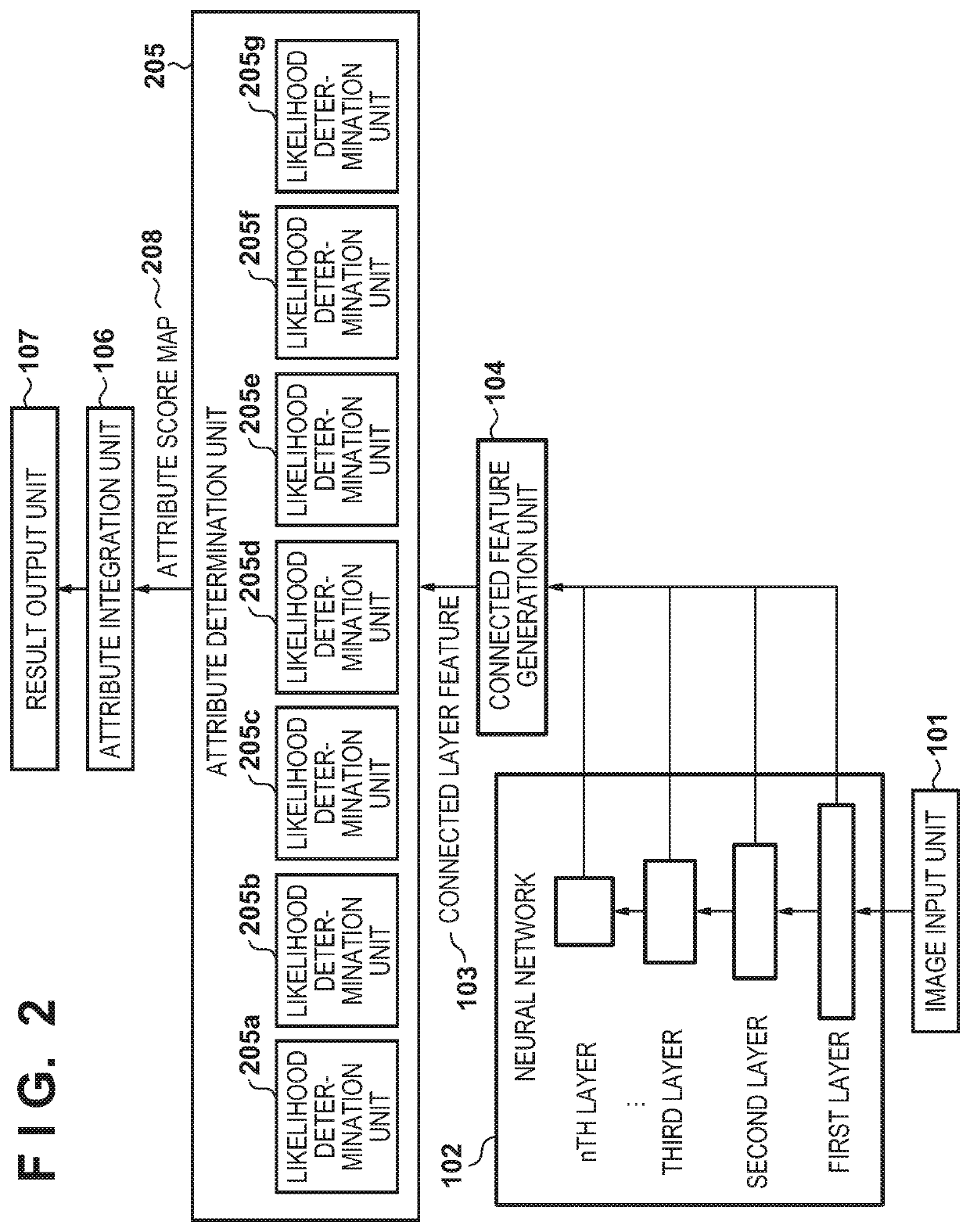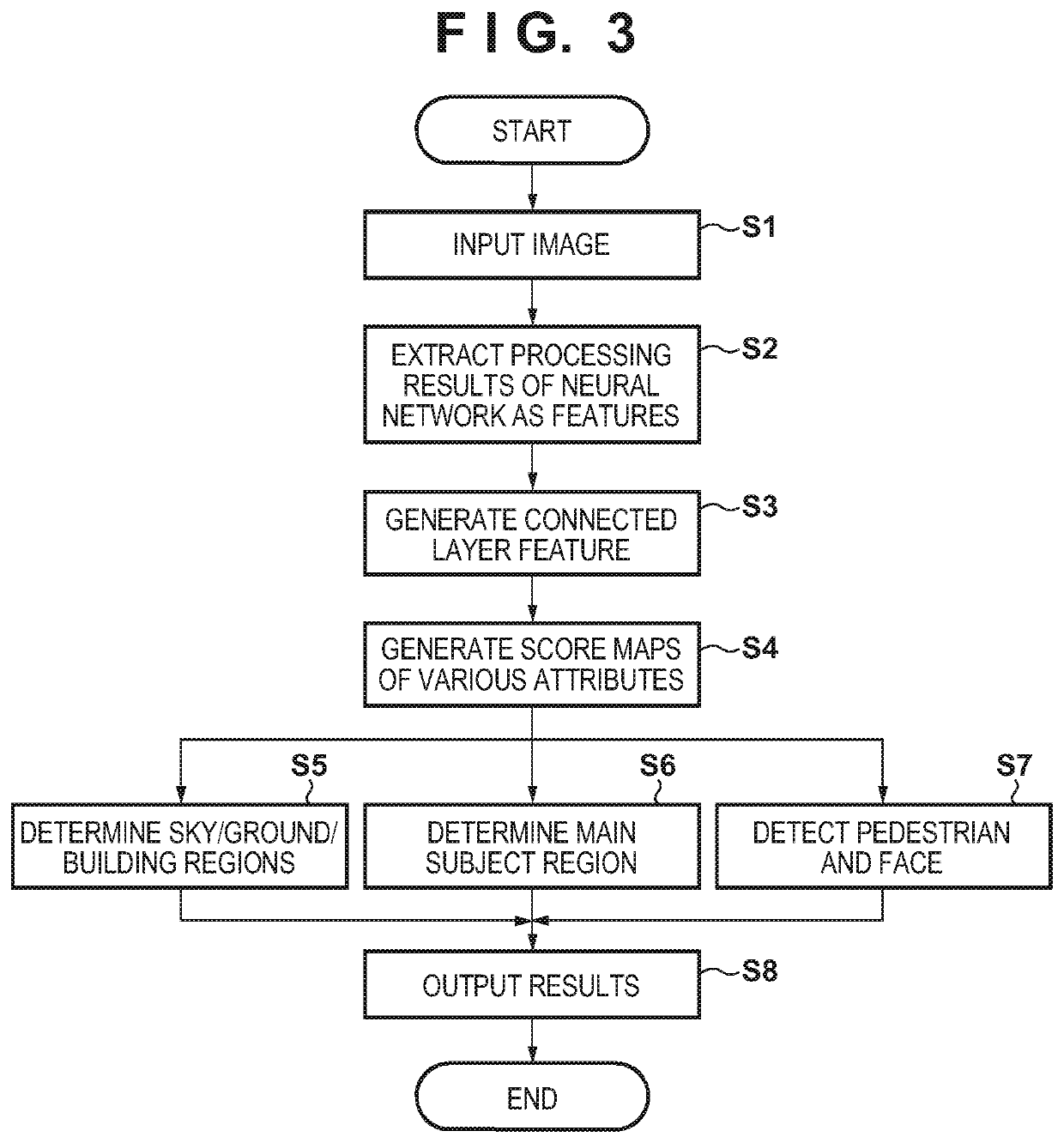Image processing apparatus, image processing method, and non-transitory computer-readable storage medium
a recognition apparatus and image processing technology, applied in the field of recognition techniques, can solve the problems achieve the effects of high calculation cost, high speed, and robust recognition processing
- Summary
- Abstract
- Description
- Claims
- Application Information
AI Technical Summary
Benefits of technology
Problems solved by technology
Method used
Image
Examples
first embodiment
Modification of First Embodiment
[0091]Although the CNN is used as a neural network in the first embodiment, a usable neural network is not limited to this. Any neural network that is formed from a plurality of layers and generates an intermediate result as a map and any method of this type are applicable. An example of this method is non-CNN type neural network that performs no weight sharing for the convolution filter of each layer.
[0092]As another example, a form that adopts the same convolution processing as in the CNN may be used as the attribute determination unit 205 instead of the SVM. In this derivative form, it is possible to learn the parameters of the convolution processing of the attribute determination unit 205 and the parameters of the neural network 102 of the preceding stage at the same time by a back propagation method. In this case, it can be expected to improve the accuracy of the recognition task (which is called end-to-end learning, and widely known by Shaoqing ...
second embodiment
[0094]In the following embodiments and modifications including this embodiment, the difference from the first embodiment will mainly be described. The remaining parts are the same as in the first embodiment, unless otherwise specified. In this embodiment, a form in which recognition processing that is robust against a variation in orientation of an object such as a person is performed will be described.
[0095]In the convolution method described in Shaoqing Ren, Kaiming He, Ross Girshick, Jian Sun, Faster R-CNN: Towards Real-Time Object Detection with Region Proposal Networks, NIPS 2015, an object candidate region (to be referred to as a region of interest hereinafter) may be set to improve the detection accuracy with respect to objects of various sizes and orientations. However, in the conventional method, a plurality of regions of interest are set on an image and the feature amounts of a neural network are totaled for each region of interest, resulting in high calculation cost. To c...
third embodiment
[0109]This embodiment shows a form in which camera information is mainly used, and a recognition task according to this embodiment aims at determination of a sky region. An example of the functional arrangement of an image processing apparatus according to this embodiment will be described with reference to the block diagram of FIG. 14.
[0110]The image processing apparatus according to this embodiment has a feature in which a camera information input unit 1308 is included. As another feature, an attribute determination unit 1305 includes likelihood determination units 1305a and 1305b for regions of detailed subcategories concerning the sky, that is, a blue sky region and a cloud region. As still another feature, the attribute determination unit 1305 includes likelihood determination units 1305c and 1305d for categories that tend to be erroneously determined as the sky, such as a water surface and a white wall.
[0111]The attribute determination unit 1305 can include not only attributes...
PUM
 Login to View More
Login to View More Abstract
Description
Claims
Application Information
 Login to View More
Login to View More - R&D
- Intellectual Property
- Life Sciences
- Materials
- Tech Scout
- Unparalleled Data Quality
- Higher Quality Content
- 60% Fewer Hallucinations
Browse by: Latest US Patents, China's latest patents, Technical Efficacy Thesaurus, Application Domain, Technology Topic, Popular Technical Reports.
© 2025 PatSnap. All rights reserved.Legal|Privacy policy|Modern Slavery Act Transparency Statement|Sitemap|About US| Contact US: help@patsnap.com



